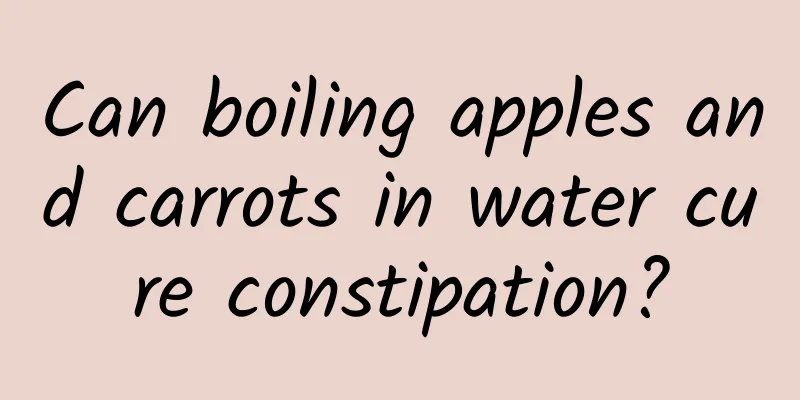What should I do if there is a hole in my tooth that hurts?

|
We have to eat every day. Not only do we have to eat meals, we may also eat some nuts to supplement nutrition. All of these are inseparable from our teeth helping us grind the food and then send the food to our stomach. It can be seen that protecting our teeth is protecting our physical health. But the reality is that we often have problems with our teeth. Today we will talk about what to do if there is a cavity in your tooth and it hurts? This is a case of tooth decay, so you must go to the dentist immediately and let the dentist take timely measures. Caries, commonly known as tooth decay, is a bacterial disease that can lead to pulpitis and apical periodontitis, and even cause inflammation of the alveolar bone and jawbone. If not treated promptly, the lesions will continue to develop, forming caries holes, and eventually the crown of the tooth will be completely destroyed and disappear. The ultimate result of its development is tooth loss. The characteristics of dental caries are high incidence and wide distribution. It is a common oral disease and one of the most common diseases in humans. The World Health Organization has listed it as one of the three major preventable diseases in humans, along with tumors and cardiovascular diseases. Causes The currently recognized theory of the etiology of dental caries is the four-factor theory, which mainly includes bacteria, oral environment, host (that is, parasites including parasites, viruses and other organisms that parasitize on it) and time. The basic point is that cariogenic food sugars (especially sucrose and refined carbohydrates) are tightly attached to the tooth surface, forming an acquired film by salivary proteins. This acquired film is not only firmly attached to the tooth surface, but also has enough time and temperature to produce acid deep in the plaque, attacking the teeth, demineralizing them, and further destroying organic matter, resulting in caries. 1. Bacteria It is a necessary condition for the occurrence of dental caries. It is generally believed that there are two types of dental caries bacteria. One is the acid-producing bacteria, mainly Streptococcus mutans, Actinomyces and Lactobacillus, which can decompose carbohydrates to produce acid, leading to demineralization of tooth inorganic matter; the other is Gram-positive cocci, which can destroy organic matter and cause tooth cavities after long-term action. 2. Oral environment The oral cavity is the external environment of teeth and is closely related to the occurrence of caries, among which food and saliva play the dominant role. (1) Food is mainly carbohydrates, which are related to the formation of plaque matrix and are also the main energy source for bacteria in plaque. Bacteria can use carbohydrates (especially sucrose) to metabolize acids and synthesize extracellular and intracellular polysaccharides. The organic acids produced are beneficial to the growth of acid-producing and acid-resistant bacteria, and are also beneficial to the demineralization of dental hard tissues. Polysaccharides can promote the adhesion and accumulation of bacteria on the tooth surface and provide an energy source when exogenous sugar is lacking. (2) Under normal circumstances, saliva has the following functions: ① mechanical cleaning effect; ② antibacterial effect; ③ anti-acid effect; ④ anti-dissolution effect. Changes in the quantity and quality of saliva can affect the caries prevalence. Clinically, the caries prevalence in patients with xerostomia or salivary secretion is significantly increased. Patients who undergo maxillofacial radiotherapy may have multiple caries due to damage to the salivary glands; on the other hand, an increase in the amount of lactic acid in saliva is also conducive to the occurrence of caries. 3. Host Teeth are target organs in the process of caries. The morphology, mineralization degree and tissue structure of teeth are directly related to the occurrence of caries. 4. Time The development of dental caries is a long process. It usually takes 1.5 to 2 years from the initial stage of dental caries to the formation of clinical cavities. Therefore, even if cariogenic bacteria, a suitable environment and a susceptible host exist at the same time, dental caries will not occur immediately. Only when the above three factors exist at the same time for a considerable period of time can dental caries occur. Treatment: The purpose of caries treatment is to terminate the pathological process and restore the inherent morphology and function of the teeth. 1. Medication Drug treatment is a method of using drugs to inhibit the development of caries on the basis of grinding away caries. It is suitable for shallow caries in permanent teeth that have not yet formed cavities, and shallow and medium caries cavities in deciduous front teeth. Commonly used drugs include silver nitrate and sodium fluoride. 2. Amalgam filling For teeth that have already formed substantial defects, filling surgery is currently the most widely used and most effective method. The basic process can be divided into two steps: first remove the carious tissue and the weak tooth tissue that has lost its support, and then make the cavity into a reasonable shape according to certain requirements. Then it is filled with filling materials to restore its inherent shape and function. Suitable for filling cavities in back teeth and hidden areas of front teeth. 3. Composite resin filling Suitable for filling front teeth and back tooth cavities that are not subjected to chewing forces. 4. Acid etching photosensitive composite resin filling The indications are the same as those for composite resin filling, and it is also suitable for cases with many tooth defects, poor retention, and covering discolored teeth. 5. Inlay A restoration made of metal or other materials that fits the tooth cavity and is embedded in the hole is called an inlay; the one that covers the occlusal surface is called a cap inlay. Applicable to: ① Those with larger cavities on the posterior occlusal surface or those with possible posterior teeth fracture; ② Those whose occlusal cavity fillings cannot restore the adjacent relationship with adjacent teeth; ③ As a semi-fixed bridge abutment. |
<<: I have a tooth decay and it hurts so much that I can't sleep.
>>: What to do with the cavity after wisdom tooth extraction
Recommend
Do you have symptoms of cervical spondylosis?
Bone hyperplasia is a common chronic bone disease...
What is the difference between Aconitum and Aconite?
The names of Chinese medicines are quite special ...
My eyes itch as if bugs are crawling in them
Sometimes my eyes feel dry and itchy, and I alway...
What medicine can cure thrush quickly?
Thrush is more common in infants and young childr...
Does medical abortion plus uterine curettage cause the most harm?
If the medical abortion is incomplete, a uterine ...
Precautions for coronary heart disease
Coronary heart disease can be said to be a common...
How to treat adenomyosis? Traditional Chinese medicine has methods to treat it
Adenomyosis is a common disease in women of child...
Who should take ginseng lozenges?
American ginseng is relatively precious among tra...
Pain between the coccyx and anus
If there is swelling and pain between the coccyx ...
What causes acne on lips? what to do?
Many people have some bad eating habits or work a...
Side effects of fever-reducing injections for infants
When a child is born, his organs are not fully de...
Women, stop exposing yourself, as this is where the cold and dampness will enter your body
“A thousand kinds of cold are easy to get rid of,...
Can sweat steaming cure acne?
Sweat steaming has certain beauty and skin care e...
The efficacy and function of drinking Panax notoginseng powder
I often see people around me have the habit of dr...
The efficacy, effects and contraindications of Terminalia chebula
Everyone has experienced diarrhea. For example, s...









